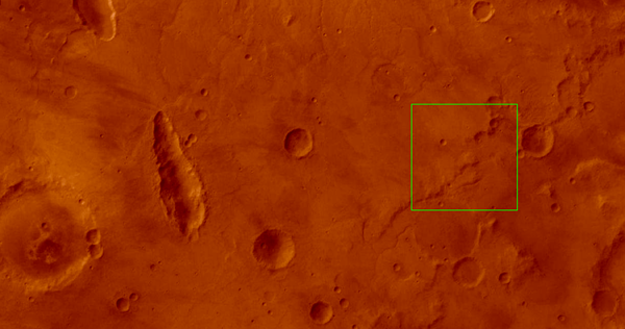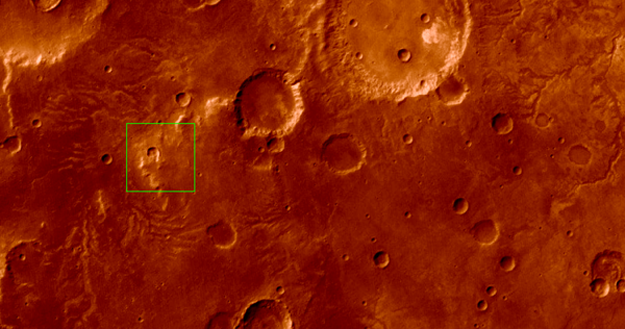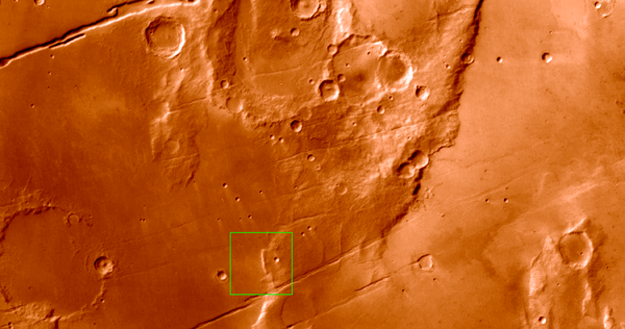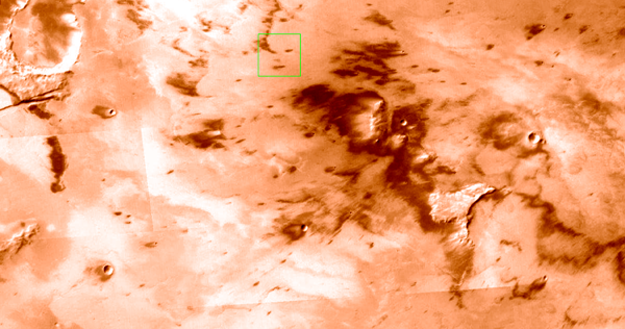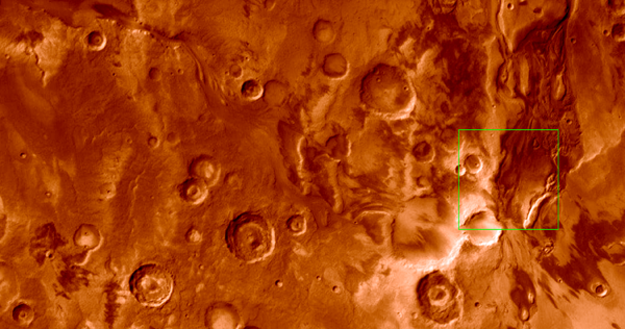Faces on Mars (2010) is a collection of 100 digital prints, arranged in a 20×5 grid on a wall. The image on each print is a false positive result of face detection software searching for faces on the surface of Mars. Each detected ‘face’ is enclosed in a square and the rest of the image is presented as it was found on Google Mars, except for the addition of an orange-red color.
The project was inspired by the photograph taken by Viking 1 on July 25, 1976 showing a 1.2 miles long Cydonian mesa, which had the appearance of a humanoid “Face on Mars”. This image caused many conspiracy theories about Martian Civilization. We do not only look at the sky and reflect our dreams, myths, desires, and fears on celestial bodies, but also sometimes carry them over to the machines that we build, without even realizing it. By finding the reflections of human errors on artificial systems modeled after human perception, this project reveals interesting aspects of our relationship with technology.
